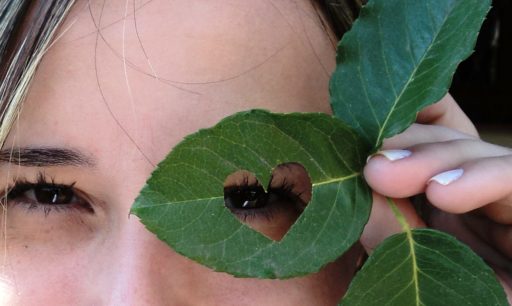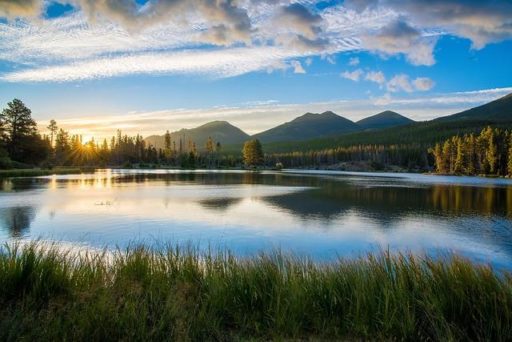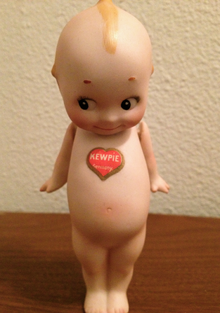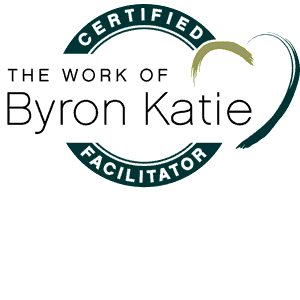Open my Eyes

Open my eyes that I may see / Glimpses of truth thou hast for me.
Place in my hands the wonderful key / that will unclasp and set me free.
Open my eyes. Illumine me. Spirit Divine!
These words, along with the very old tune, haunt me once again, refusing to let go until I listen. It’s a familiar evocation that has become a sound track of my life’s changes. There’s the quiet comfort of a childhood hymn, embedded even before thought or awareness. I sit in humbled silence, grateful that, on this somewhat rare occasion, most of the words and messages of my Southern Baptist past aren’t requiring a lot of translation to speak to my soul as it is now.
It’s a birthday and a passage for me as I begin my (yikes!) eighth decade of life. I’m spending a couple of days in solitude, on a seaside personal retreat. And then there’s the tune, paired with a certain deep plea of the heart. I feel humbled by the resonance of it. And then so many memories kick in, cataloguing the incidents of the past when the song came to me as a prayer at different stages and ages of life.. I’m momentarily grateful that I still have a memory for this reason alone. And when I don’t, I’m grateful for my sidekick Google, who’s always waiting nearby for a new case to solve. I’m amazed to discover the hymn, over 130 years old, was written by Clara H. Scott, the first woman to publish a hymnal.
My mother would be so proud, I think. She died last year, but for years she was way ahead of me when it came to feminism and hymns (or religion, for that matter). When she got involved in the “inclusive lyrics” movement for church songs, I had left all of it far behind, all of the crap from my childhood religion. Or so I thought. Years later, sitting by the ocean with the refrain wafting through the sounds of the waves, without my mother’s living presence in my life, I’m not so sure.
There’s a glimpse of the truth of the first stanza. I think about how meditation and inquiry have unclasped and set me free during the last decade. I think of all the ways I have come to understand at the deepest levels the true inner workings of the stories and scriptures and prayers of my childhood. As I sit in contemplative silence on this momentous birthday, I notice the unique (and yet universal) presence of Spirit, at all ages and stages. Always there, when I notice it.
And then the very last stanza pops into my mind. I realize I don’t even need to know what to call it or where it comes from, that voice of truth, but I celebrate it by singing aloud a song from my soul to the sea in front of me:
Silently now I wait for thee,
ready my God, thy will to see.
Open my eyes…ears… heart,
illumine me, Spirit divine!
An invocation. An intention. A celebration.
A prayer for a decade.
Respect Existence. Expect Resistance.

My eyes seem to be trained to focus on text in all forms. So I can’t seem to keep myself from reading any big print I come across, like bumper stickers. I realize this might not be true for everyone, but some of us can’t help ourselves. One of my friends referred to the habit of reading whatever comes into view as “life according to text.” A whole lot of text pollution comes through my brain without my noticing, even when I shut off my phone with the express intention of slowing down my brain.
A couple of weeks ago I flew to a silent retreat in the high Sierra mountains to clear some clutter out of my brain. On the road and in the airport, my eyes just kept on reading, as they do, collecting aphorisms and occasional cleverness along the way. I arrived at the destination still in compulsive reading mode. Retreat Center. Check. Pristine mountain lake. Check. Bumper sticker. Must read. Respect Existence. Expect Resistance. Double take. Whoa! Deep, I thought for a second.
Then my brain skidded to a sudden stop. These four words seemed to just sum it all up. Life. The Universe. Everything. Inside out. Outside in. The word “Resistance” has come to mean something very specific of late. From the outside, it would seem that respecting existence (healthy planet, bodies, animals, lakes, oceans…on and on) does in fact bring up resistance from those who see their interests threatened. But this is the kind of over-thinking I was trying to forget for the week, away from the daily bombardment of polemics.
The focus on this week was internal. So I brought myself back, asking myself a question: where do I experience resistance when I respect my own existence?
Only almost always, came the answer. And I’ve noticed it’s not just me. For just about everyone I know, respecting “existence,” the life we’re calling our own, involves making one change or another. Cutting down on carbs. Going vegan. Taking up hiking, yoga, writing, or anything that calls us. And especially the Big One: becoming more mindful in how we live our lives. Any little thing can bring up some other opposing force. Something we casually refer to as “resistance.”
The odd thing is that the closer the change is to our essential self or our life calling, the greater the resistance. This is the good news and the bad news. I’ve been examining this for a while now, but during this retreat I sat with the puzzle of it. Day in and Day out. Living in inquiry, I watched myself move in and out of the life force. Feeling the flow, joining it. Noticing the ways my critical mind or old habits show up. Then, understanding that resistance isn’t futile, I returned to the flow of existence once again. Which is where I find myself today, in my “regular life.” Expecting (and understanding and respecting) the way of it. All of it.
In the meantime, when I get lost in the trance-like feeling of resistance, my favorite William Stafford poem brings me right back to the sweet summer, to this time of life, to what is truly important. To existence.
Why I Am Happy
Now has come an easy time. I let it roll.
There is a lake somewhere so blue and far nobody owns it. A wind comes by and a willow listens gracefully. I hear all this, every summer.
I laugh and cry for every turn of the world,
its terribly cold, innocent spin.
That lake stays blue and free; it goes on and on.
And I know where it is.
– William Stafford
What my Kewpie Sisters Taught Me About The Mojo of Jomo

I just spent the weekend in the Kansas City celebrating a landmark birthday (one with a zero in it), along with a dozen other women who are exactly my age. Hint: we’re all from the first wave of Baby Boomers. Okay. Seventy. We call ourselves the Kewpie Sisters. Because that is what we are, alumnae of Hickman High School, home of the Fighting Kewpies. For real. Would I make this up?
We gathered smack dab in the middle of the flyover zone. The group of women who came together was as diverse as this country, held by a common bond of caring that is far stronger than “the great divide” we keep hearing about. But we didn’t have time to talk about that. We had better things to talk about.
Mostly we laughed and shared our common memory banks to reconstitute teenage versions of ourselves. Then we reflected back, mining the experience and offering up the perspective that we have collected in the last 50-plus years. What showed up was something I believe is called Wisdom in some people’s minds, including my own. At this time of life, it’s indescribably satisfying to be able to share the take-aways from life’s apparent setbacks and challenges. And I always love honoring my curiosity about what I don’t know (which, when it includes the mystery of life, is a whole lot).
Gone were the social roles, the need for acceptance that seems to come with the teen years. My own strategy way back when was to join every activity and choir and group available except women’s sports, and I’m not even sure we had those teams in the Stone Age. But my major motivation was this: I just didn’t want to miss out on anything.
This habit hasn’t changed all that much since my adolescence. Twenty years ago a friend diagnosed me with FOMS, the “fear of missing something.” In recent years the acronym has morphed into the pop psych meme FOMO, or Fear of Missing Out. So my ears perked up when my friend Vicki talked about being in a state of contentment, being satisfied with her “ordinary” life. This is a woman who has raised four children who are global citizens, who has traveled extensively to keep in touch with them for many years. So when she mused that she was done with travel it got my attention.
I still have a few airline miles to cash in and a few travel goals that will keep me busy as long as I’m fit enough to pursue them. BUT, I completely resonated with her description of a satisfied life. More and more, I’m opting out of things. It’s been a gradual process, hardly noticeable except inside myself. I started to see that often when I choose to not slip into the loop of doing or the belief that I should do more, have more, be more…my mind settles down. I breathe. I watch the birds. Or the trees. I move slowly, like the “old person” I never wanted to become. And it’s blissful. How could I have ever known, with all my joining and searching and moving around, about the surprising quiet joy of this time of life? Ironically, in my determination to not miss out, I’ve been missing something far more subtle and sweet.
Mojo of JOMO. The Joy of Missing Out. The name came to me at the reunion. And then, returning home, Vicki sent me a link to a blogpost referring to another forty-something’s post on this same topic from a couple of years ago. So I guess Baby Boomers don’t always get to be first. As a matter of fact, perhaps this is the great learning of what I’m claiming as the True JOMO Years. Finally, at long last, we get to miss out on being first, the leaders, the trendsetters and rule breakers. It’s about time. JOMO to me includes the relief of giving up all old identities, including that one.
Several questions and wonderings arise. What did I actually miss when I was so busy strategizing how to not miss out?
A life lived with openings for whatever shows up, comes the answer.
There’s so much to be gained when I’m not busy chasing what I might be missing. What new openings are created when I don’t do, when I don’t fill my time with all the tantalizing offerings before me? I get curious.
Today a friend posted these words by the 87 year-old sage Ram Dass, one of the respected mentors of my generation: “Aging has its own beauty. It is a beautiful stage for doing inner work. You have a chance to not be so dependent on social approval. You can be a little more eccentric. You can be more alone. And you can examine loneliness and boredom instead of being afraid of them. There is such an art and a possibility in aging…”
Once again, he nailed it.
Image by Scottdoesntknow [CC BY-SA 3.0], from Wikimedia Commons
Singing For Life

This spring I returned to sing in a choir of my Homies called Jubilate!
It’s a different experience than chanting as a yogic practice. But it’s a practice still, singing harmonies with these women of all ages and stripes, songs about heart, about spring, and about what it means to stand up for what matters. This practice reminds me of what’s important, especially right now, when times can be pretty dark.
Last month we serenaded the local Marchers for Life, where about a tenth of the population of my town showed up. When we started I barely managed to squeak, flooded as I was by the tears and the beauty of all the layers of past and future that came together in the faces I saw. When I got home, it turned into a poem of impressions, a poem that could remind and inspire me. For Life. For Love. For these times.
One Foot In Front of the Other, and Lead with Love!
A choir of 30 women, named for jubilation,
We sing, sway, clap, and dance to the river of determined
Marchers for our Lives.
Arms linked, signs as varied
As their new bodies, their life-worn bodies, and in-between.
Pink flowers with the names of the fallen.
A skinny tween-aged girl carrying her advice:
Use Ur Indoor Voice. Don’t Yell at Us.
The songs, the river, the people keep flowing,
Never Turning Back.
We are the Ones We’ve Been Waiting for, we sing.
Won’t Let Nobody Turn us Around,
Mind holds a prayer:
May I remember this.
The constant constant constant beat
The never-ending flow of
The pulse that holds it all. The refrain:
It is time now, and what a time to be alive
In this Great Turning we shall learn to lead in love

